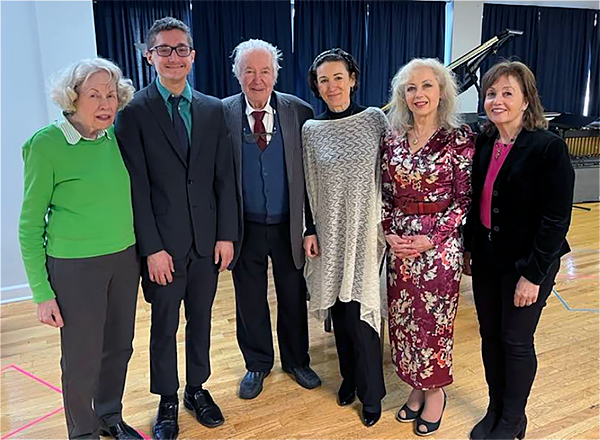Music Educators Association of New Jersey
Serving teachers and students since 1927


MEA Presents...
Teachers’ Master Class with Mikhail Voskresensky
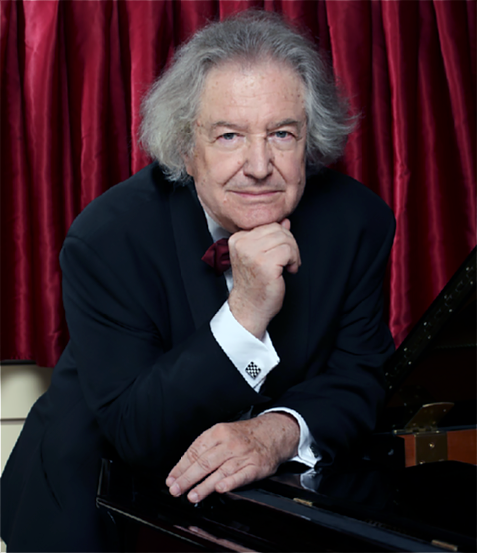
March 24, 2024
at Elefante Music & School for the Performing Arts
Programs Chair Sophia introduced international pianist and master teacher Mikhail Voskresensky to the attendees and Zoom audience with an abbreviated biography of his decades-long musical career. When hostilities intensified in Ukraine in 2022, he left Russia, where he had been chair of the piano faculty of Moscow’s Tchaikovsky Conservatory, and entered the United States. Here he was eagerly invited by the most prestigious universities and music organizations to participate in events and programs. He has an extensive presence on YouTube in addition to his website mikhailvoskresensky.com. Teachers’ Master Class Coordinator Beverly Shea prepared a beautiful program with more detailed information. Lisa Gonzalez was Zoom coordinator.
Dumka in C Minor, Op. 59 (Scenes From a Russian Village) by Pyotr Ilyich Tchaikovsky was performed by Aziza Khasanova-Madaski.
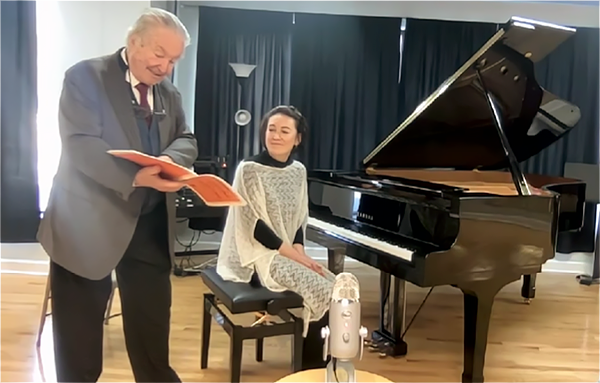
A native of Tajikistan who began piano lessons at age six, Aziza continued her study in Russia, where she earned a master’s degree from Kazan State Conservatory. She is a versatile, prize-winning pianist, accompanist, chamber musician, band pianist and teacher. Aziza moved to the United States in 2014 and opened her own studio in 2019. Mr. Voskresensky praised her performance highly. He reminded us that Dumka is a meditation, and perhaps a fantasy.
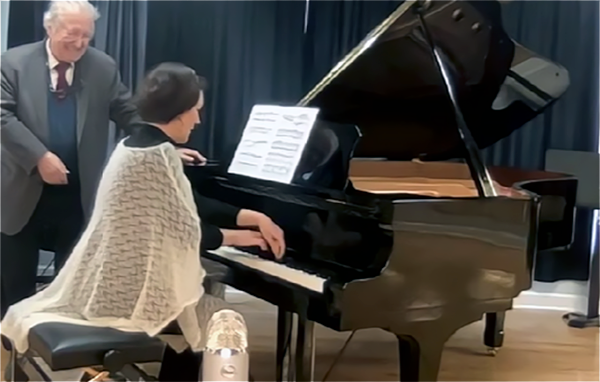
Dumka’s tempo changes can affect the feeling of unity. Once a tempo is chosen, it must be steadily maintained. The master teacher remarked that Aziza played the Andantino cantabile as andante and the Poco meno mosso as molto meno mosso. Mr. Voskresensky demonstrated the music slightly faster. The music flowed. He also played the closing Tempo I, suggesting a tragic musical message with his singing tone. He cautioned Aziza: “Don’t sink on every note. This is Ukrainian music! Think Ukrainian songs!” In mm. 44, 45, hands must play together. The Con anima is taken at an alla breve pace, with no ritardando in m. 53, where the texture thickens. At the Poco meno mosso, think “a little more sad.” Mr. Voskresensky asked Aziza to repeat the cadenza and cheered, “Brava! Super!” He commented that Tchaikovsky was a very emotional man. The triple forte in m. 92 reminded him of the sextuplet forte in Tchaikovsky’s Second Piano Concerto. These were 19th century dynamics, not classical ones. From Aziza’s sparkling playing and from Mr. Voskresensky’s coaching, we appreciated the musings of this Dumka.
Ludwig van Beethoven’s Sonata in E Major, Op. 109 was performed by Ryan Bridge. Ryan received his undergraduate music education at the Manhattan School of Music, followed by graduate study at Montclair State University. He has performed extensively internationally. He has a private studio in addition to teaching at the Wharton Institute for Performing Arts. Ryan began with the first movement, the most difficult.
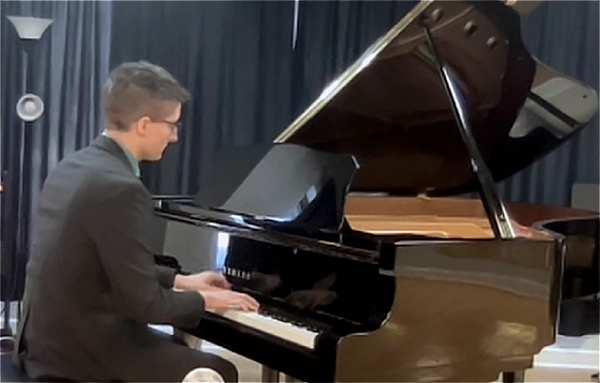
Then commentary commenced. There are challenges in choosing the appropriate tempo and dynamics. Vivace, ma non troppo requires a bit of restraint lest it becomes presto. Mr. Voskresensky asked Ryan what images came to his mind, and he answered, “beautiful nature and human suffering.” This can be derived from the E major opening that is suddenly interrupted by the diminished seventh chord of the Adagio espressivo. Then the challenge is to keep the pulse steady throughout mm. 12 to 15. In the following section, Tempo I, at m.22, sing the soprano voice. This is the beginning of a remarkable, lengthy crescendo that is sustained with the use of syncopation and sforzando/piano dynamics. The section ends with another anguishing diminished seventh in the Adagio expressive. The stepwise motion in bass 32nd notes (m. 59) and treble 64th notes (m. 60) should be treated melodically, with dynamic shaping. Mr. Voskresensky cited the dominant G 7th and C major arpeggios in mm. 61, 62 as a brief cry of victory and strength before the return to E major. He also advised “singing” the chorale beginning in m. 78. Throughout this coaching session, he praised Ryan on his ability to incorporate new approaches.
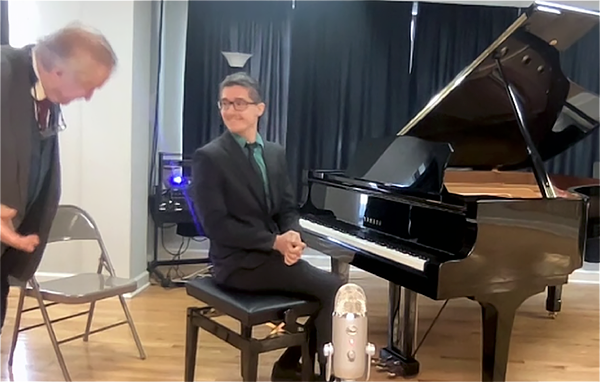
The middle movement, Prestissimo, was only a presto, too slow for our master teacher! But taken at a slightly faster speed, it caught fire. Other suggestions were: use pedal sparingly, except when keys are repeated as in m. 26; in legato or un poco espressivo sections, produce the affect with fingers, not with the pedal; in the section beginning at m. 70, where the right hand plays two voices, announce the half note entrances; play Mikhail Voskresensky and Ryan-Bridge the chordal passage at m. 97 a tempo; and generally, get louder without accelerating, and get softer without slowing.
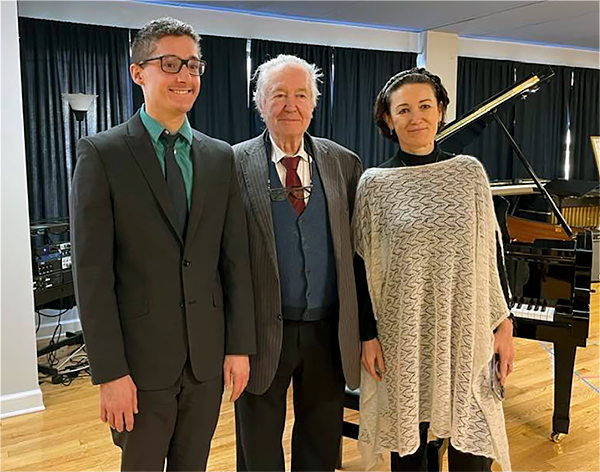
Finally, the theme and variations, Andante molto cantabile ed espressivo, was performed and discussed. Mr. Voskresensky drew our attention to the choral nature of the theme. He reminded us that the decorative broken chords (mm. 12,13) should be played with the first note on the beat, in classical style. And treble grace notes are played on the beat, with the bass. He asked Ryan to think about a moving andante, nothing slower. Imagine the first variation to be a soprano solo. The second requires a steady tempo. The third, with a mercurial 16th note foil against eighth notes, demands articulation and equality of fingers.
The fourth variation, a pleasant, flowing section, contrasts sharply with the fugal fifth variation. Ryan was advised to announce the half notes, playing them legato, and to play the eighth and quarter notes non legato. Suggestions for the sixth variation included using less pedal, particularly when there are descending scales. The final iteration of the theme led Mr. Voskresensky to praise Ryan on his performance. He added, “You are a wonderful pupil. You played what I wanted.”
Bertha Mandel, writer
Lisa Gonzalez, screenshots layout
‘MEA Presents…’ Attendees, photos
